England-South Africa Flights
-
-Flight - ESA 1930-10 Caspareuthus
1930
A New Record
Rhinie Frederick Caspareuthus in a D.H. "Puss Moth" belonging to Mr. Marshall, of Port Elizabeth.
An ex-RAF South African, he made the journey in the record time of 9½ days.
Left Croydon on October 5; arrived Maitland Aerodrome, Cape Town, on October 13, an hour before he was expected. Total flying time 78 hours.
He said afterwards that he had been forced down by storms to a few hundred feet at Beauvais shortly after the disaster to R 101, but saw no signs of it.
He later flew for Imperial Airways.
-
-Flight - ESA 1930-11 Spooner, Edwards
1930
"Miss Winifred Spooner, who with F./O. E.C.T. Edwards made a forced descent in the sea at Belmonte during an attempt to fly to the Cape in record time, arrived back in London on December 20. She had intended to fly home from Paris, but fog prevented this, so she made the journey by boat and train. F./O. Edwards flew back from Paris to Hendon on December 22."
-
-Flight - ESA 1931-03 Kidston, CJ
1931
The "Blazing the Mail" flight - another record
Lt-Cmdr Glen Kidston and Lt. Owen Cathcart Jones, with L. A. Valletti (wireless operator) (replaced by L. Johnson for the second half of the flight) in Lockheed Vega G-ABGK.
Time: 6 days 10 hours
Left Netheravon, Wilts at 6a.m. on the 31 Mar. Delayed by a forced landing near Lichtenburg (Pretoria), but arrived 5.30p.m. 6 April. Total flying time 57hr 10min.
Imperial Airways (who had not even taken delivery of their already-obsolete H.P. 42 biplanes), regarded the flight as a 'stunt', bearing no relation to a "proper" commercial operation.
At the time, it was the quickest delivery ever made of a London newspaper (The Times) to Johannesburg, and 'created much interest in the city'.
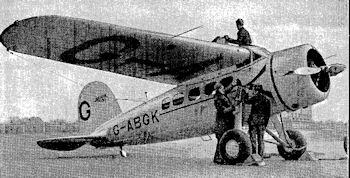
Glen's Vega, which was an 'Also Ran' in the 1934 MacRobertson Race.
-
-Flight - ESA 1931-10 Salaman, Store
1931
Peggy's Brief Moment
Miss Peggy Salaman and Mr. Gordon Store, in her DH.80A Puss Moth G-ABEH
And two lion cubs...
Left Croydon October 31
Total Time: 5d 6hr 40 min., beating Kidston's record by about 28 hr. Their total flying time was 64 hr., Kidston's being 56 hr.
The aircraft (the only one she ever owned) was sold in Kenya in 1933, and survived until 1948.

-
-Flight - ESA 1932-04 Mollison
APRIL 1, 1932
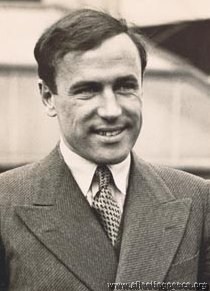
"England—Cape Town In 4d 17hr 30min
Mollison Realises his Ambition
Gradually the aeroplane is bringing the parts of the British Empire closer together, mentally no less than physically. By his flight Mr. J. A. Mollison has brought Capetown within 113hr. 22 min. of London, and, although this was achieved at the cost of terrific strain on the pilot, the flight has once again demonstrated to the world the qualities of British aircraft and British aero engines."
-
-Flight - ESA 1932-12 Amy
1932
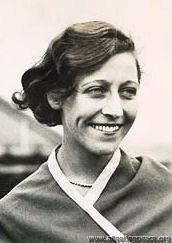
Mrs. Amy Mollison in her " Puss Moth "Desert Cloud"
ALTHOUGH Mrs. J. A. Mollison was unable to beat her own record, for the England-Cape flight, on her return journey, she has succeeded in breaking the previous record (9.5 days, established by Capt. C. D. Barnard and the Duchess of Bedford) by about two days. She has also shown, by the splendid effort on this last flight, in which she had to fight against most unfavourable weather conditions throughout, that she undoubtedly ranks foremost amongst long-distance pilots.
She flew from England to Cape Town in 4d 6hr 54 min., thus beating her husband's previous record for the same journey.
Amy's time for the homeward flight was 7d 7hr 25 minutes; she left Capetown at 5 a.m. (G.M.T.) on December 11, landing at Croydon on December 18.
-
-Flight - ESA 1933 Smith
1933
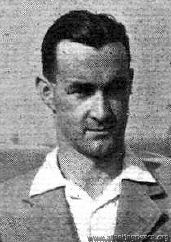
Mr. Smith's Flight
MR. VICTOR SMITH, the 19-year-old South African airman, who left Capetown on November 13, arrived at Croydon on the evening of November 24. Mr. Smith's flight may not have been record breaking, but it was not without interest and excitement. After he had left the Niger River to fly by compass to Gao, Mr. Smith suddenly found that a petrol feed pipe was leaking, and instead of having about 25 gall, he only had left sufficient fuel for about 10 min. flying. He force-landed near a pool of water and received hospitality, such as it was, from members of the Tuareg tribe.
-
-Flight - ESA 1935-01 Brook
1935
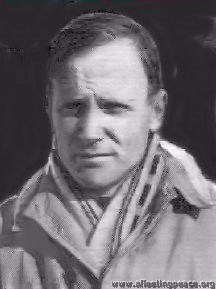
Brook's Bad Luck
Mr. H. L. Brook, who was attempting to beat the England-Cape record in a Miles "Falcon," had a mild crash while landing after dark at Mersa Matruh, about 260 miles E.N.E. of Cairo. He was uninjured and will probably carry on to Cape Town in easy stages preparatory to making a fast return flight.
-
-Flight - ESA 1935-02 Llewellyn
1935
David Llewellyn, flying instructor at Hanworth, and his one-time pupil, Mrs. Jill Wyndham, who, in a Parnall Heck, are out to break the London-Cape record, have made a forced landing between Aboukir and Cairo. On their previous attempt they turned back at Marseilles.
They eventually got there in 6d 8hr 28min.
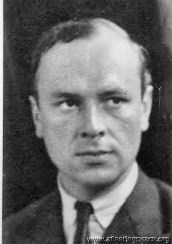

-
-Flight - ESA 1935-03
1935
UNLUCKY AGAIN
Tom Campbell Black and his co-pilot Mr. J. G. McArthur had a second slice of ill-luck in connection with their Cape Town-and-back record attempt. At the same time, they must be congratulated on a very fortunate escape. It will be remembered that in the middle of last month they set out in Mr. Cyril Nicholson's D.H. Comet Boomerang, but were forced to return after experiencing a shortage of oil due to a curious error in the making of the dip-sticks of the oil tanks. Last Saturday they made a renewed attempt. Weather reports proving favourable, they left Hatfield aerodrome at 4 p.m., the Comet making a remarkably short and clean takeoff in spite of its heavy fuel load and an almost entire absence of wind. They flew non-stop to Cairo, which they reached in 11 hr. 9 min.—bettering their previous time—then refuelled before taking off for Kisumu, Kenya. They were last seen flying over Wadi Haifa, then nothing more was heard of them for twenty hours, and a good deal of anxiety was felt. It was not relieved until they suddenly and surprisingly appeared at 2 p.m. on Monday at Kubushia, near Khartoum, riding camels. It was then learned that the Comet had crashed and caught fire in the desert 100 miles north of Khartoum, and that the crew had escaped by parachute.

-
-Flight - ESA 1936 Rose
1936

BACK and FORTH
Rose (Falcon) and Llewellyn (Aeronca) Fly Respectively From and To South Africa
THE Cape-England record has been broken by Fit. Lt. Tommy Rose, who can now claim to have made the fastest time for the trip both out and home. His new record is 6 days 6 hr. 57 min. (he got to the Cape in 89hr. 37 min.), which beats F/O David Llewellyn's time—the previous best—by 5 hr. 6 min.
Just to keep the pot boiling, Llewellyn has now flown to Johannesburg in an Aeronca with a J.A.P. engine of only 40 h.p. Rose, of course, was using the Miles Falcon.
Left Capetown at 6.8 a.m. (G.M.T.) on Tuesday, March 3
-
-Flight - ESA 1937 Clouston
1937
From November 14 to 19 F /O Arthur Edmund Clouston and Mrs. Betty Kirby-Green made a fine return flight to the Cape in the D.H. Comet Burberry, taking outward (45 hr. 2 min.), homeward (57 hr. 23 min.) and return (5 days 17 hr. 28 min.) records.
"The official world's record flight from England to the Cape is held by Miss Amy Johnson in 78 hours 25 minutes, and the return record by Mr. H. L. Brook, whose time was 96 hours 20 minutes ; these two are registered with the F.A.I, as Records de Parcours, or capital to capital records."

D.H. Comet 'The Burberry'; G-ACSS, the Aeroplane Formerly Known As 'Grosvenor House' and 'The Orphan'.
Currently at Shuttleworth
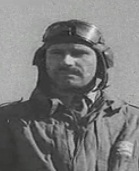

-
-Flight - ESA 1939 Henshaw
1939
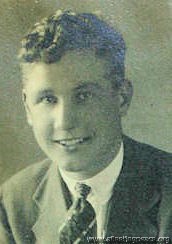
HENSHAW'S CAPE DASH
A Brilliant Solo Effort in a Racing Single-seater
TO Alex Henshaw, winner of the 1938 King's Cup Race, goes the credit of having made one of the most spectacular long-distance dashes of recent years— from London to Cape Town and back in 106.5 hours.
The outward trip of 6,000 miles he accomplished in 39hr. 25 min., and the homeward run took 39hr. 36 min. The out and home journey, including his rest period of 27 hours at Cape Town, was accomplished in 106hr. 1 min.
He thus beats the record set up in November, 1937, by F/O. A. E. Clouston and Mrs. Kirby-Green (flying a D.H. Comet) by 5 hr. 37 min. outward; 17 hr. 47 min. homeward; and 30hr. 59 min. for the round trip. The best previous solo time, one way, was that of Miss Amy Johnson in 1936, with 78hr. 25 min.
The machine, G-AEXF, was the familiar white one with which Henshaw won last year's King's Cup Race, and in which he has competed in a number of events during the last two years. It is by no means new. It had, however, been very considerably modified by Essex Aero, Ltd., specially for this attempt.
-
-The Aviators
The Aviators
-
Bailey, Mary
Hon. Lady Mary Bailey
Royal Aero Club Certificate No. 8067 (26 Jan 1927)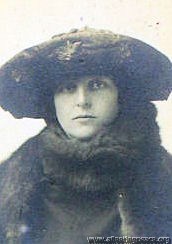 1927, aged 37
1927, aged 37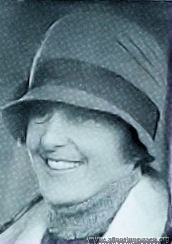
1930, aged 40
The Hon. Mary Westenra, b. 1 December 1890 in London but brought up mainly in County Monaghan, Ireland.
Her family's home was Rossmore Castle, which was a grand affair built in the 1820s, with turrets, a vast drawing room and servants' quarters, not to mention about 20 cottages on the estate:
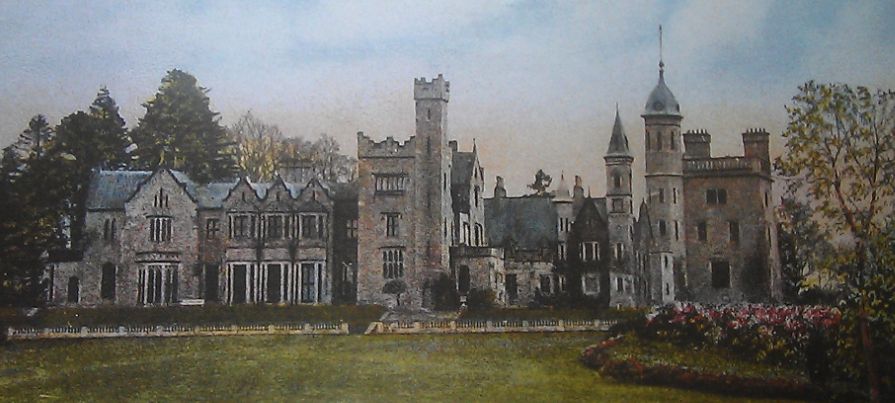 www.monaghan.ie/museum
www.monaghan.ie/museumHere she is, with her brother Willie, and parents (Mittie and Derry) on a set of steps by the house, in 1913:
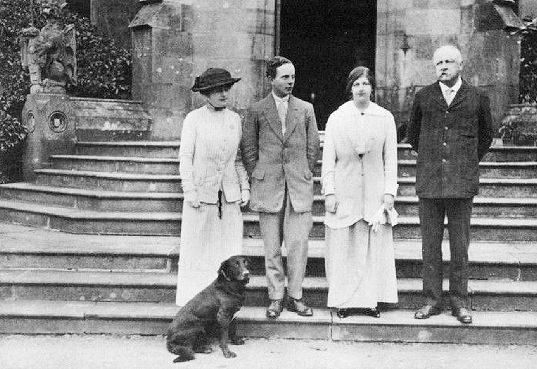 Throttle Full Open
Throttle Full OpenI visited County Monaghan in 2014 and asked in the local museum if they knew where the house was. 'Oh yes' they said, 'but it was demolished forty years ago'. It seems that it became severely infested with dry rot in the 1940s, was abandoned and, indeed, demolished in 1975.
Anyway, here's all that's left of it now:
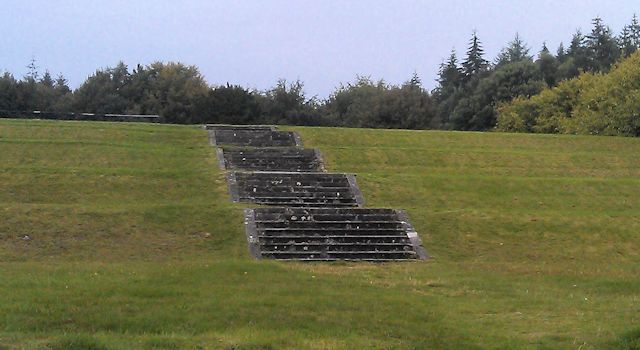
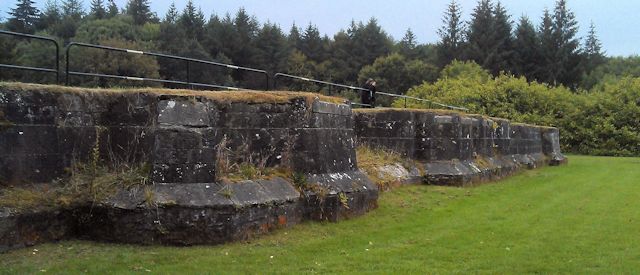
Mary married South African mining magnate and white suprematist politician Sir Abe Bailey in September 1911 (so, she was 21, he was nearly 47; his first wife had died in 1902 and he already had two children). They then had five more children - 2 boys and 3 girls.
She learnt to fly at the London Aeroplane Club in 1926. She was the first woman to fly across the Irish Sea 'by the long route' from Chester to Dublin, the following August.
The following March (1928) she began a solo tour to Cape Town, via Malta and then Cairo. Here, her plane was locked away by order of the Governor-General of the Sudan to prevent her from continuing alone, so she contacted Dick Bentley (who had flown to the Cape a few weeks before) to escort her in his own aeroplane over the "dangerous area of the southern Sudan". She then crashed in Tanganyika, writing off her aeroplane (she said it was her fault), but Abe made arrangements for a replacement Moth to be delivered from Pretoria and she continued, despite having 'flu. Abe was there to meet her when she arrived at the end of April.
The return journey was made via the western 'French' route - the Belgian Congo, Angola and the French Congo. She finally arrived back at Croydon on 16 January, 1929, 10 months after she left. It was "undoubtedly one of the finest performances ever put up by a woman pilot."
Lady Bailey was "so modest, so vague and so charming", and was "surprised that anyone should make a fuss about her journey".
A Director of National Flying Services in 1929, (with Frederick Guest, Colonel the Master of Sempill, Alan Cobham, etc); she was also awarded the Brittania Trophy by the Royal Aero Club, and then made a Dame of the British Empire in 1930 for "services to aviation".
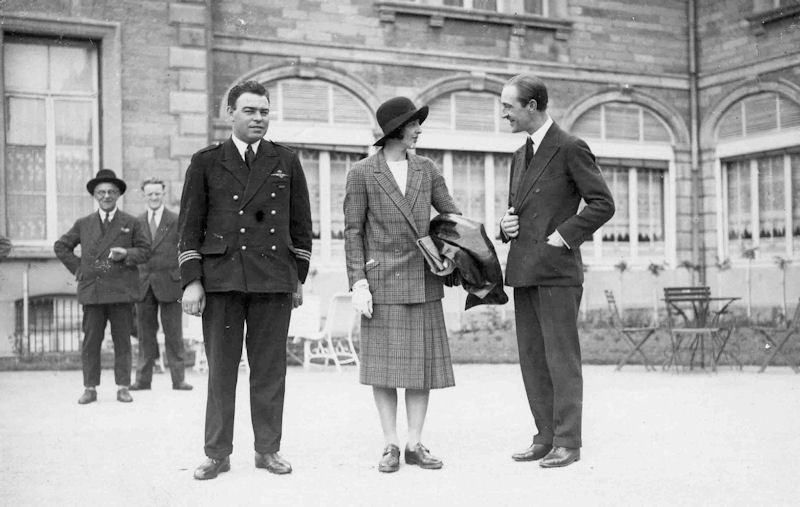
At the Chateau d'Ardennes in 1930
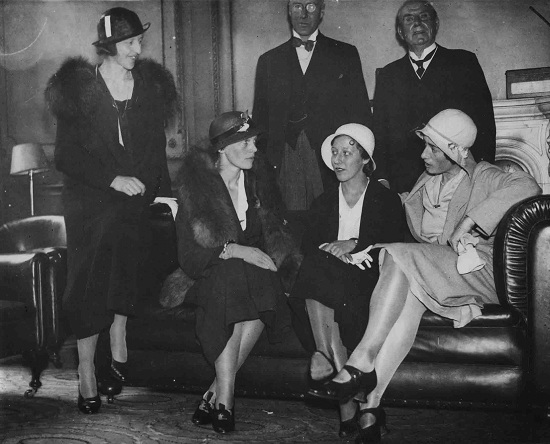
She was a guest at Amelia Earhart's reception at the Royal Aero Club in May 1932.
In early 1933 she gave everyone a scare by disappearing for several days on another solo flight to Cape Town; thankfully, she had only got lost, run low on fuel and landed safely in the Sahara. [Bert Hinkler, who disappeared at about the same time, was killed in the Alps]. She then flew back to England and almost immediately went down with a bout of typhoid, but recovered in time to compete in the King's Cup later in the year.
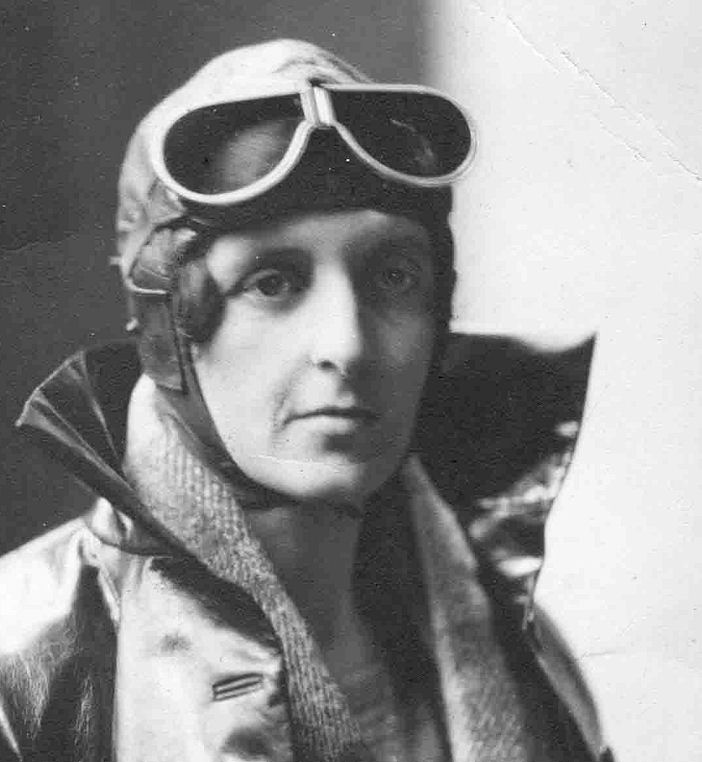
After that, she concentrated on looking after their horses, giving and attending loads more balls and receptions, and marrying off their many children.
When Abe died in 1940, she settled near Cape Town (still keeping a house in Rutland) and died there 29th August 1960 aged 69.
Lady Mary's aeroplanes were:
a 1926 DH.60 Moth (G-EBPU),
a 1927 DH.60X Moth (G-EBSF, the one she crashed in Tanganyika),
the replacement DH.60X Moth (G-EBTG, which Abe bought in Nairobi);
a 1928 DH.60G Gipsy Moth (G-AABN);
a 1929 DH.60G Gipsy Moth (G-AAEE) and
a 1930 DH.80A Puss Moth, G-AAYA.
-
Barnard, Charles Douglas
Capt Charles Douglas Barnard
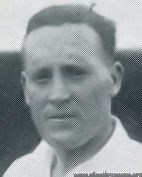 photo: 1930
photo: 1930Personal pilot to the Duchess of Bedford, 'ribald and golden-haired'.
b. 8 Dec 1895 in London; his father, Charles Gilbert Barnard, was a master printer (and not related to Franklyn Barnard's father). He learnt to fly in 1915 with the RFC. After WWI, became a test pilot for Sopwith, then a pilot with the de Havilland Airplane Hire Service after meeting Alan Cobham, then their chief pilot, in Spain.
In July 1920, he was convicted of manslaughter, for killing an elderly man in a car accident in which he failed to stop, and didn't report; "Charles Barnard (24), a demobilised airman from Watford whose machine was brought down in flames in France, was charged with the manslaughter of Alfred Sharp on the night of May 2, by knocking him down whilst driving a motor-car. A button, answering the description of other buttons from the deceased's coat, was found between the bonnet and mudguard of the accused's car. He was remanded, bail being refused." It also turned out that his driving licence had lapsed at the time, and he hadn't renewed it until some days after the accident.
He was given 4 months imprisonment in the 'Second Division' (such prisoners were kept apart from other classes of prisoners, received more frequent letters and visits and wore clothes of a different colour). The Judge said there was "too much reckless driving by people who served in the war. Their war services were no consolation to bereaved relatives."
Settling down a bit after that, he was the pilot in 1923 when an aeroplane belonging to the de Havilland Hire Service was used to ferry Commander Bristow to have a look at an Italian ship, the D'Aosta, which had become stranded in Malta. It was the first time the flight had been made, and it took over 14 hours, mainly (Charles complained) because the authorities in Pisa insisted on a deposit of 15% of the value of the machine.
One of his other jobs for the de Havilland Hire Company was to fly G-EBGT 'Nulli Secundus', a perfectly good D.H.9c, while a certain Captain Spencer jumped out of it - see the video here.
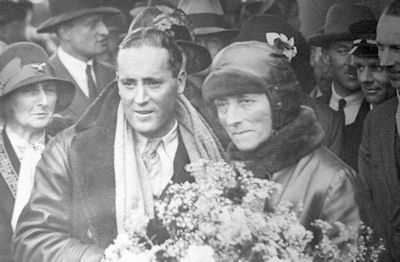
His first long-distance flight with the Duchess of Bedford was a tour in 1927 from her home in Woburn Abbey to France, Spain and North Africa, covering 4,500 miles in 3 weeks. Two years later, he piloted her Fokker monoplane, the 'Spider' to India and back, 10,000 miles in 88.5 hours; the RAeC gave him their Gold Medal for the year. It wasn't their first attempt at the flight to India and back - a year before they had tried the same thing, but problems with the propellor meant that the Duchess had had to come back by steamer from Karachi (which at the time was in India, of course).
In 1928, described as a 'flying man', he was cited as the co-respondent in a divorce case. At the time, he and Mrs Melita Erna May were living together at his place in Monmouth Rd, Bayswater; they got married in December.
In 1930 he and the Duchess made another record flight from London to Cape Town and back, 19,000 miles in 20 days, and he again flew to Malta and back in Puss Moth G-AAXW in 2 days: see the videos here :http://www.britishpathe.com/video/to-the-cape-and-back-in-19-days and here: http://www.britishpathe.com/video/malta-and-back-in-2-daysIn 1931, he was seriously injured when he, Lord Lovelace and their American mechanic crashed near Tripoli, as they were flying to Kenya.His marriage didn't last; Melita left him in 1933 and filed for divorce. He was in court again, when he was accused of assault by Mr Thomas Birks, a solicitor's clerk. Charles, described as a 'civil pilot wth a distinguished record' tried to persuade his wife to return to him, and somehow thought that a revolver might help; Mr Birks tried to intervene, and alleged that Charles fired a shot at him. Charles, however, won the case and was awarded 15 guineas damages (although he had asked for 50).He then formed his 'Flying Circus' - 8 aeroplanes which toured India in 1933 "giving displays of formation and stunt flying to over a million people who have never seen such a thing before... Joy rides will be offered to people at a small charge".He was back again by popular request in 1935, as co-respondent in yet another divorce case - this time with Mariska Marguerite Spurr.d. August 7, 1971. Only 2 people went to his funeral... -
Bentley, Richard Read
Richard Read Bentley
 in 1917
in 1917b. 20 November 1897 in London Dick described himself as "one who preferred to live in the open, rather than within the confines of a London office" - one who, luckily, found it possible to make his living mainly by aviation.
His mother having died when he was 12 (he said "I did not then recognise that my father was a broken man due to the loss of my mother"), he and his father had to move from Sheen Gate Mansions to a boarding house in a less fashionable area of London. After a while in an office in a paper merchant's - which he hated - he was packed off to Canada; when he got there, he found that his father had also died.
After a stint as a farm hand in Canada, he came back to England and joined the RFC in WWI (photographic reconnaisance with 59 Sqn, then a flying instructor at Hooton).
Then,"I hung around in London trying to get a job without any luck, like hundreds of other demobs. As I didn’t want to return to Canada I decided to try Rhodesia." He soon fell under Africa's spell, and for quite a long time lived in the jungle and went from job to job, supported by his dwindling RAF gratuity.
He then had "four marvellous years" after joining the South African Air Force - "Whoopee!!! Back on a job I really knew".
When the D.H. Moth first went on sale in 1926, Dick immediately decided he wanted to fly one from London to Cape Town. He raised the £600 he needed from the Johannesburg 'Star', in return for exclusive publicity, and on the 1st September 1927 set out from Stag Lane in G-EBSO, carrying a Mauser pistol generously lent to him by his C.O. Sir Pierre van Rynefeld. Lady Bailey had christened the aircraft 'Dorys', after Dick's then-girlfriend (later his wife), and you can even watch Lady B do her stuff here.
After a "trouble-free" flight, he arrived in Cape Town on the 28th September, completing the first solo flight in a light aircraft from England to Cape Town (and the longest single-engined flight to date, for which he got the RAeC's Britannia Trophy).
The 'Star' unexpectedly presented him with the aircraft (the the original deal was that it would be sold) and he then made his living from air taxi and joy-riding flights. In 1928, he escorted firstly Lady Heath, then Lady Bailey across the Sudan in their record-breaking flights (them women weren't trusted to fly alone, of course).
He and Dorys flew back to England for their honeymoon and then spent a few months at Hooton. On the way back down to Cape Town (yes, again), they met up with Glen Kidston and Donald Drew, who were using a Fokker triplane to do 'aerial safaris'; they offered to give Dorys a lift so that Dick's plane could carry a spare propeller for Stanley Halse's plane (I know this is all very complicated, I'm trying my best). Anyway, the Fokker made a forced landing and Dorys bumped her head quite badly, but was apparently OK. Dick later said that "I have said “apparently” because twenty years later - we had parted in 1938 - in 1948 she died in America of a haemorrhage of the brain. Could that blow received in 1928 have been the root cause of her demise?"
The flying world grew steadily and Dick soon became a ubiquitous figure on the civil aviation scene. "Popular, energetic, resourceful, he was as indifferent to the weather as to the day of the week, joining in the harum-scarum adventures of customers, welcome everywhere.” He flew the Shell Comper Swift G-ABUS, and his aerobatic displays were memorable.
He flew in the RAF(VR) in WWII, remarried (to Anne), then retired.
Dick died in May 1990, aged 93.
All quotes shamelessly lifted from Roma Part's 'Pioneering Spirit', which is on the Johannesburg Light Plane Club's website www.jlpc.co.za
-
Brand, Christopher Joseph Quintin
Sqn-Ldr (Sir) Christopher Joseph Quintin Brand KBE, DSO, MC, DFC
 photo: 1916, when a 2nd Lieutenant in the RFC, aged 23
photo: 1916, when a 2nd Lieutenant in the RFC, aged 23 in 1926
in 1926Born in Beaconsfield, in the 'Cape Colony'. WWI Ace (16 victories).
Knighted in 1920 after (more or less) flying to Cape Town in the Times' Silver Queen.
Principal Technical Officer at RAE Farnborough 1925-7; played a vital role in the Battle of Britain in charge of No 10 (Fighter) Group.
Later an Air-Vice-Marshall; died in 1968.
-
Brook, Harold Leslie
Harold Leslie Brook

b. 11 October 1897, in Bradford
Only learnt to fly in 1933, and just scraped up the minimum 100hrs solo flying time required to enter the Race. The aircraft was barely ready in time either; a month before the start it didn't have any seats, and was in "a very unfinished condition". Harold was not impressed by "those fools at Reading [i.e. Miles Aircraft]... this is not the first time they have omitted to do something".
In March 1934, he tried to break the England-Australia solo record (held by CWA Scott) but only got as far as the Cevennes before crashing into one of the large mountains they have there. To give him his due, he picked up the important bits of his aeroplane, brought them back and used the engine in this Miles Falcon.
In 1935, after taking part in the MacRobertson, he flew back from Australia in record time; you might like to see him talk about his record-breaking flight (on the other hand, you may have some drying paint that needs watching); if so, click Record Flight From Australia - British Pathé (britishpathe.com)
Two years later, he added the Cape Town record. Mercifully, there don't appear to be any interviews about this one.
Pilot Officer in the Administrative and Special Duties Branch in May 1940, then briefly (28 Oct 1940 - 3 May 1941) in the Air Transport Auxiliary (ATA)
And, despite what you may read or hear, was never an accountant in his life (although with his spectacles on, he did rather look like one, and when he talked, he did rather sound like one [sorry]), and he signed himself 'Brook', not 'Brooke'.
But 'e were definitely from 'Arrogate.


H. L. BROOK writes to TERRY'S
Dear Sirs,
I should like to take this opportunity of congratulating you on the excellence of your Springs in my Gipsy 6 Engine. In a record-breaking flight of this description the engine has to be run for long periods in extreme temperatures, and at a higher rate of revolutions than normal, and for a valve spring to break would spell disaster. I had never at any time any fear of this happening with your springs, and they are now at the end of the flight in just as good condition as they were at the start.
Yours faithfully,
(signed) H. L BROOK.
'Flight'
Racing No. 31—H. L. Brook, and —?
And speaking of Bradford, here is Harold Leslie Brook, who was born there in 1897, and now resides in Harrogate. He joined the Royal Field Artillery on August 20, 1914, at the age of 16, obtained his commission soon afterwards, and, despite a couple of wounds, served five years in France and India.
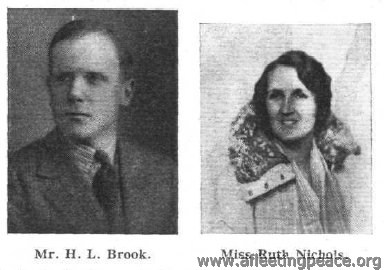
Restored to his family, he remained a normal civilian until Yorkshire began to build and fly sailplanes and gliders. These occupations kept him mildly diverted until the approach of his 37th birthday. Then he began to yearn for horse-power. The York County Aviation Club at Sherburn-in-Elmet offered a likely fulfilment of this secret ambition. So, in August, 1933, Brook placed himself in the hands of Instructor Cudemore, and after four hours' instruction became a soloist with serious designs on the MacRobertson Handicap, for which Phillips and Powis have built him the first of their Miles 'Falcons'.
What happened between last autumn and this spring is now almost historic. Brook bought the "Puss Moth" (Heart's Content) in which the Mollisons had crossed the Atlantic, and, with a total of 43 hr. in his logbook, pushed off solo from Lympne to survey the route to Melbourne. That was on March 28, 1934, at 5.20 a.m.
By noon the incident had closed. Describing it a few days later Brook said that, while flying through very dirty weather over France, he was forced down from 12,000 ft. by ice formation on the wings, and, before he knew how or why, the side of an unsuspected mountain was rushing up at him out of the murk. Guided by some uncanny sixth sense, he brought off a bloodless landing on the mountain proper. The scene of this epic of the air was Genolhac, in the Cevennes. With some local help he salvaged the "Gipsy Major," brought it back to England, and has had it installed in Heart's Content II.
Brook's next attempt on the Australian record will not be solo. If expectations are realised, he will be accompanied by two lady passengers.
'Flight'
Another England-Australia attempt
MR. H. L. BROOKE, a member of the York County Aviation Club, left Lympne at dawn on the morning of Wednesday, March 28, on an attempt to break the record for the England-Australia trip held by Sir Charles Kingsford-Smith with the time of 7 days 3 hours. Mr.Brooke was flying the " Puss Moth " (" Gipsy III ") Heart's Content, in which Mr. J. A. Mollison made an Atlantic crossing. A few hours after leaving Lympne, while flying through fog, he crashed in deep snow near Genholac, in the Cevennes. The machine was completely wrecked, but Mr. Brooke escaped with nothing worse than some bad bruises. For five hours he wandered about inthe mountains, and eventually found a small village, where he was given every attention. Later he returned to the wreck of his machine, and removed the instruments and other articles of value.
'Flight'
April 4, 1935
YORK COUNTY AVIATION CLUB, SHADWELL, LEEDS
During March the York County Aviation Club, Ltd., flew 63 hours at Sherburn-in-Elmet, and Miss Maurice and Mr.Pilkington made first solos. Two machines flew to Nottingham for the club dance, and Mr. Humble, the honorary instructor, has presented the club with a fire tender—a very apposite gift! The next dance will be held on April 13.
Mr. H. L Brook, who has just broken the Australia-England record with a Miles " Falcon," was trained at Sherburn—which appears to be a pretty good advertisement for the instruction.
'Flight'
These days, the home of Sherburn Aero Club: http://www.sherburn-aero-club.org.uk/
SWIFTLY from AUSTRALIA
How H. L. Brook, in a " Gipsy "-engined Miles "Falcon" broke the Solo Record : His Story in an Interview with " Flight
"LAST Sunday afternoon, at 3.55 p.m., the original Miles" Falcon " landed at Lympne, having flown in 7 days•* 19 hr. 50 min. from Darwin, North Australia, withMr. H. L. Brook, of Harrogate, at the controls. The •pilot thus beat the unofficial " s o l o " record of Mr. C. J.Melrose by 13 hr. 10 min., and the officially recognisedperformance of Mr. J. A. Mollison by 1 day 2 hr. 25 min.The shortest time for the Australia-England trip is still,of course, the 6 days 16 hr. 10 min. of Cathcart Jones andWaller in a " C o m e t ."After leaving Darwin at 5.30 a.m. on Sunday, March 24(Australian time), Mr. Brook's time-table was as follows:—Sunday night, arrived Rambang ; Monday, Penang; Tuesday,Rangoon; Wednesday, Calcutta; Thursday, Karachi; Friday,Athens; Saturday, Rome; Sunday, Marseilles (9.25 a.m.) ;Lympne (3.55 p.m.).the Timor crossing, he told a member of the staff of Flight,was " r o t t e n , " with rain, low clouds and heavy head winds.On the trip from Penang he landed on the delta near Calcutta.Over the Sundarbans low clouds and darkness caused him totake this measure rather than to fly on, possibly missingCalcutta, and, as he put it, perhaps making a crash landingthrough shortage of petrol.Perhaps the worst section of the trip was that betweenAthens and Rome, particularly the portion over the channelof Corfu, where a gale was encountered. At Brindisi Mr.Brook was advised not to proceed, but he pushed on andcrossed the Apennines in a snowstorm.And what of the man himself? He is a thirty-eight-yearoldYorkshireman, who, despite the newspaper stories, hasnever been an accountant in his life. When he was youngerhe indulged in motor racing and later built a few sailplanesand gliders. Then he joined the York County Aviation Cluband went solo after four hours' instruction. He next boughtMr. J. A. Mollison's "Puss Moth" Heart's Content, and setout for Australia to survey the route to Melbourne, for he haddecided to enter the MacRobertson Handicap. But ice formationforced the " Puss Moth " down on a mountain side inthe Cevennes. Neither Brook nor the "Major" (which, itshould be remembered, had already been flown over the SouthAtlantic) was rendered hors de combat, however. The enginewas salvaged and Brook brought it back to England, where itwas installed in the first of the Miles " Falcons" which thenwas fitted with extra tanks for the race. During the event itcarried a lady passenger and a large helping of appalling
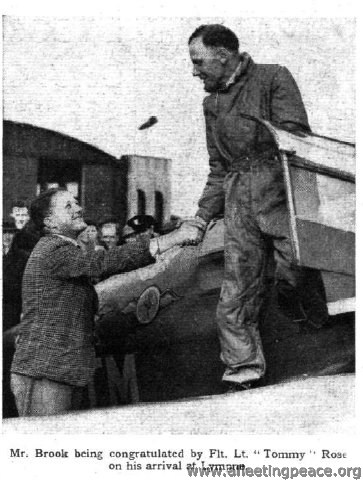
luck (no connection is suggested between the two facts!).Suffice it to say that the Australian trip, a large portion ofwhich was made in easy stages, took about twenty-six daysDuring his stay "down under," Brook worked until the" F a l c o n " and its engine were in tip-top condition beforestarting his almost unheralded flight.Of travelling in the "Falcon " he says that, compared withflying in an ordinary aeroplane with open cockpits, it was" like travelling in a saloon car instead of on a motor cycle. The veteran "Gipsy Major" was run throughout the flight at 2,100 r.p.m.
HILLSON PRAGA
Imported specimen 107 Praga E.114 OK-PGC. Regd G-ADXL (CofR 6479) 27.11.35 to F Hills & Son Ltd; dd Speke to Barton 30.12.35. CofV 91 issued wef 27.2.36. Dd 20.4.36 to Harold Leslie Brook; flown by him to South Africa, departing England 6.5.36; arriving Cape Town 22.5.36. Regn cld 6.36 as sold. Regd ZS-AHL 6.36 to OG Davies, Cape Town. Sold 8.37 to H Cooper, Cape Town. Converted to glider at Youngsfield 9.53.
30th Aug. 1940.
ADMINISTRATIVE AND SPECIAL DUTIES BRANCH.
The undermentioned are granted commissions for the duration of hostilities as Pilot Officers on probation:— 22nd May 1940.Harold Leslie BROOKE, D.C.M. (84353).
-
Broome, Frank Crossley Griffiths
Capt Frank Crossley Griffiths Broome 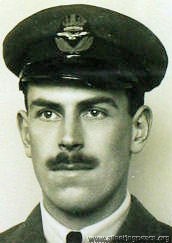 photo: 1917, when a Lieutenant in the Army Service Corps, aged 25
photo: 1917, when a Lieutenant in the Army Service Corps, aged 25Vickers test pilot - he and Stanley Cockerell (q.v.) were known as the 'Heavenly Twins'; Frank served under Stanley in WWI; when Frank married Miss Ismay Lermitte in Colchester in 1920, Capt. S. Cockerell, A.F.C., was best man. He and CJQ Brand were in the same squadron in WWI.
In 1920 the Heavenly Twins were the pilots of the attempt, organised by The Times, to make the first flight from Cairo to the Cape. The Vimy Commercial aeroplane left Brooklands on January 24 but crashed at Tabora [Tanganyika] on February 27. They finally reached the Cape "after a series of undeserved misfortunes".
Frank Crossley Griffiths Broome - born in London (St Pancras) in 1892. He enlisted in the Army Service Corps. Won DFC, and AFC.Youngest son of Frank Broome, and lived at Winterbourne, Weybridge.He married Ismay Lermitte, daughter of Lt Col Lermitte (deceased) of Woodhouse, Great Horkesley at All Saints Church on August 17th 1920.At the wedding ceremony, the cake was adorned with the silver Vickers Vimy, which had been presented to him by The Times newspaper, to commemorate his 1920 Africa flight (in Silver Queen II) The purpose was to test the feasibility of the Cape to Cairo route, and was sponsored by the newspaper. The plane crashed, and it sounds as though the expedition was an arduous one.
Later the same crew of Captain Cockerell, Captain Broome and ex Sgt Major James Wyatt crashed in a seaplane in March 15th 1922, about four miles from Hastings.
Broome also flew with 112 Sqn, based at Throwley. On the night of 19/20 May 1918, he was one of dozens of pilots that took off against a wave of Gothas and Giants which attacked the UK. Broome didn't see them, but fellow sqn pilot CJQ Brand bagged a Gotha that night.
Page 2 of 4

